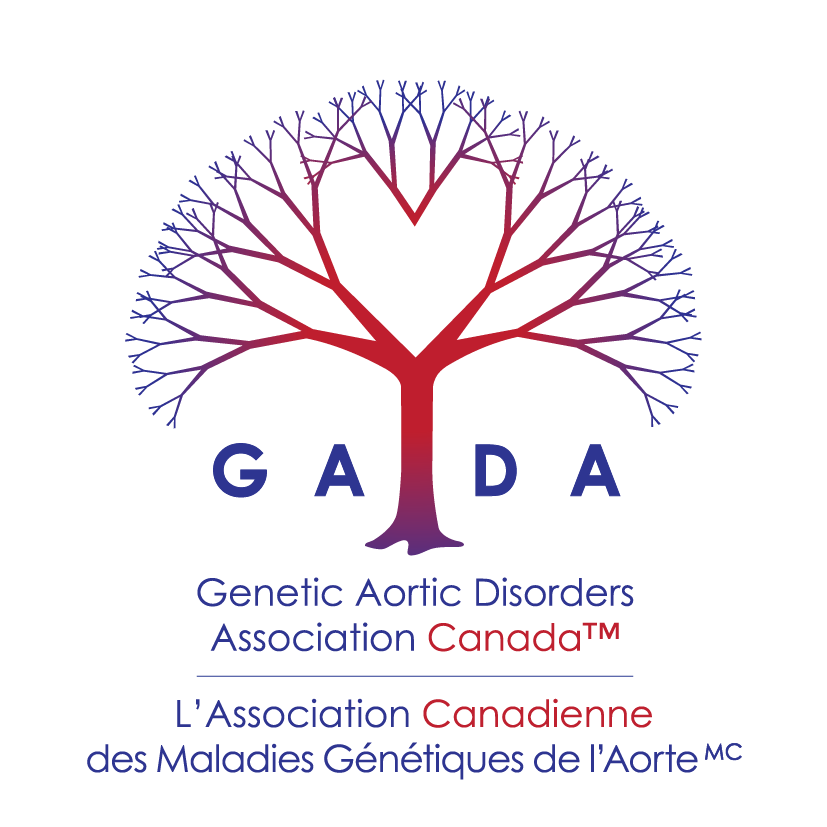2014 November 19 Losartan vs Atenolol Study Results: Equal Therapies
November 19, 2014
Losartan vs. Atenolol in Children with Marfan Syndrome Study Results: Equal Therapies Canadian Marfan Association Statement
The long awaited results of the Paediatric Heart Network (PHN), National Heart, Lung, and Blood Institute (NHLB), and Marfan Foundation funded clinical trial of losartan versus atenolol in children and young adults with Marfan syndrome, were presented on 18 November at the American Heart Association Scientific Sessions and simultaneously published in the New England Journal of Medicine.
The trial included 608 Marfan syndrome patients between the ages of 6 months and 25 years, across 21 clinical centres in the United States, Canada, and Belgium. The results showed that losartan was equally effective as the alternative therapy atenolol.
Atenolol belongs to a class of drugs called beta-blockers, and is the current, standard therapy for slowing the progression of aortic enlargement in Marfan syndrome. Losartan belongs to a class of drugs called angiotensin receptor blockers (ARBs).
Previous small studies and mouse models, suggested that losartan might be more effective in slowing the growth of the aorta and even decrease an already enlarged aorta. The PHN study, the largest trial to date comparing losartan and atenolol found that there was no difference in the aortic growth rate between those taking the two drugs. The study’s investigators believe aortic growth was slower in both groups than if patients were without either drug since the rate at which the aorta was growing declined in both groups. While there was no group in the PHN trial randomly assigned to be untreated (that is to take a placebo), data from previous studies strongly suggest that the aortic enlargement would have been substantially greater had no drug been administered.
In an editorial by Dr. Juan M. Bowen and Dr. Heidi Connelly of the Mayo Clinic, which accompanies the study, the doctors state that, “these findings indicate that clinicians should continue to consider beta-blockers to be the primary medical therapy for aortic protection in Marfan's syndrome. Losartan appears to be a reasonable treatment option, especially in patients who cannot take beta-blockers. The risk of harm from losartan appears to be very low, but its efficacy needs to be firmly established before it becomes a first-line therapy.” The study’s co-author, Dr. Reed E. Pyeritz of the Perelman School of Medicine at the University of Pennsylvania, and Canadian Marfan Association Professional Advisory Board member, stated “I am left with a good-news and not-so-good-news perspective,” he is encouraged that beta-blockers appeared to protect the aorta and that losartan might be just as good; but the not-so-good news, he added, is that “perhaps irrational expectations were incorrect” that losartan would be a cure for Marfan syndrome.
The study’s findings reported “there is merit in starting therapy at a younger age and at an earlier stage of the disease,” said the study’s principal investigator, Dr. Ronald V. Lacro, director of the Cardiovascular Genetics Clinic and Marfan Syndrome Program, Boston Children’s Hospital. “We have to remember that although this study did not show one drug to be more effective than the other, it still helped us greatly expand our knowledge of Marfan syndrome and the effects of atenolol and losartan.”
This large study has had a wider-reaching impact in the scientific community. Ten additional trials on losartan or other ARBs were launched globally; each uses a slightly different protocol, including different dosages or combination therapy of both ARBs and beta-blockers. A meta-analysis of the results of all the global studies may provide the best information going forward. The Marfan Foundation is also conducting supplemental studies using subsets of the PHN trial population to look at: genetic factors contributing to efficacy of losartan vs atenolol, effect of both drugs on musculoskeletal aspects and use of both drugs in relation to severity of Marfan syndrome.
We are grateful to all the participants and physicians and researchers who participated in this study; and to the PHN, NHLBI and Marfan Foundation who funded the study. Dedication to this study has given way to additional research, moving forward to better therapies and outcomes for patients with Marfan syndrome.
Lacro et al. Atenolol versus Losartan in Children and Young Adults with Marfan's Syndrome. N Engl J Med. DOI: 10.1056/NEJMoa1404731.
Editorial "Of Marfan's Syndrome, Mice, and Medications" by Dr. Juan M. Bowen and Dr. Heidi Connelly in the New England Journal of Medicine which accompanied the study publication
